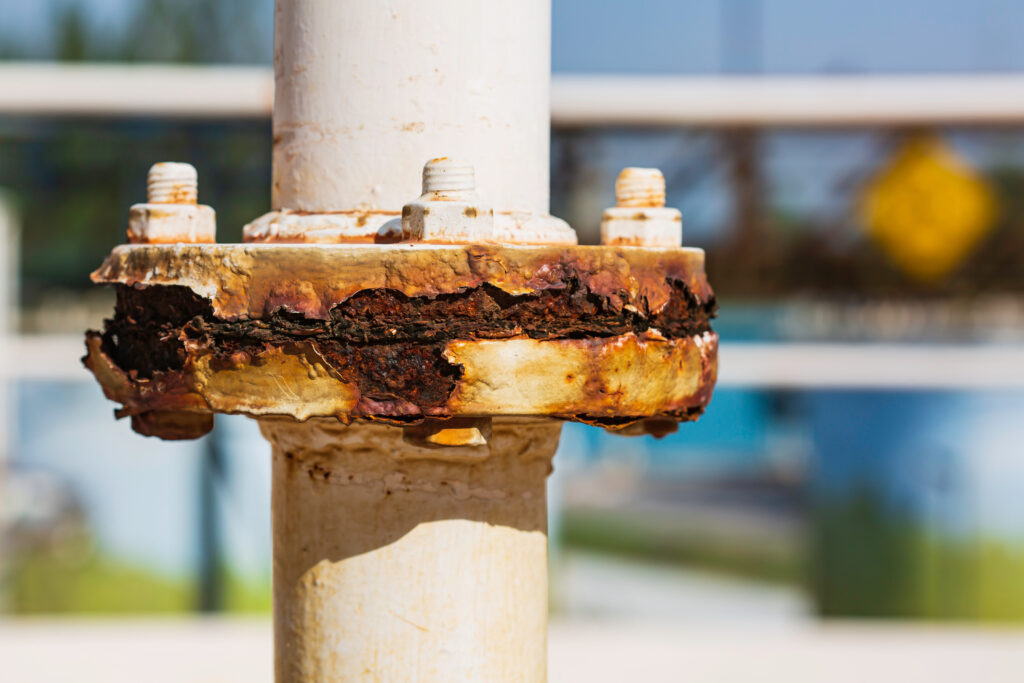How to Combat Storage Tank Corrosion with H2S Scavengers?
Hydrogen Sulphide, also known as H2S, is a hazardous, naturally occurring gas found in oil and gas production. Exposure to H2S has detrimental health effects on facility workers and can significantly corrode storage tanks and other infrastructure beyond repair.
Some of the major challenges that the oil and gas industry face while handling high levels of toxic H2S is being in a perpetual state of hypervigilance for personnel safety and operational integrity. One begets the other, if either of these fails, the other will be severely compromised.
For this reason, H2S removal technologies needs to be implemented in the field. Using the right Hydrogen Sulfide scavenger will protect personnel on location, and in doing so it will protect crude oil storage tanks and other infrastructure from corrosion as well as enhance product quality to ensure one complies with commercial specifications.
What are the Major Concerns with Hydrogen Sulfide Emissions in the Oil and Gas Industry?
When oil & gas is stored for long periods or transported either in a static state or in dynamic configurations, off gassing (also known as gas release, which can contain H2S) should be closely monitored. Because of adverse effects, H2S ladened off gassing will increase and compromise the safety of the facility, the environment, and everyone working on the premises. In addition to the dangers of exposure to this toxic gas, other concerns, such as odor control, must also be addressed.
Residential and commercial communities near the storage facility will become susceptible to the sulfur smelling odors that are not only noxious, but can also bring hefty penalties for non-compliance with local and national regulations for emission standards. Hydrogen sulfide is highly corrosive and can damage storage equipment and pipelines unless a proper H2S removal strategy is implemented.
Impact of H2S on Storage Tanks
Corrosion is a major issue for carbon steel storage tanks when hydrocarbon products in them have high concentrations of H2S, as it may result in cracking of the tank walls and a significant reduction of its lifespan. H2S acidifies water, causing corrosion to carbon steel tanks.
Operational challenges become a primary concern as contamination of final products, such as crude oil barrels or gas,and corrosion caused by H2S on the terminal and storage facilities, need to be dealt with.
H2S consequences in storage tanks:
- Tank corrosion: Unrecognized corrosion issues can cause significant damage and even potentially dangerous material release occurrences.
- Fire or explosion risks: Various iron sulfides are created when sulfur, steel, and water are mixed. These sulfides are pyrophoric, which means that an exothermic oxidation process happens quickly when they are exposed to oxygen. The temperature that results from the oxidation reaction can be high enough to ignite H2S in the vapor space or burn the sulfur itself if there is a large amount of accumulated sulfides.
- Operational costs: if H2S is not dealt with, it may contaminate the crude or gas, which will affect its market price. Along with this, high investment will have to be made to fix corroded tanks and infrastructure.
- In summary, corrosion is an ever-present threat to infrastructure and without mitigating the presence of H2S, corrosion can be exacerbated, making it much more difficult to remedy.
How Can One Combat Storage Tank Corrosion with Chemical H2S Scavengers?
While there are several preventive measures for H2S removal, like corrosion inhibitors, alloys, anodic and cathodic protection, and internal coatings, the most effective way to get rid of the H2S is by treating it with chemical scavengers (as early in the process as possible) as they will stop the H2S from coming in contact with the metal walls of the storage tanks and pipeline, thus preventing widespread corrosion. Let us explore how chemical inhibitors work on H2S in the oil and gas industry.
What are Chemical Scavengers?
Chemical scavengers are the crude oil industry’s most commonly used H2S removal technique. They are effective and quickly eliminate hydrogen sulfide particles from refineries and oil and gas producing basins.
They are commonly used by Oil and Gas producers, midstream companies, refinery operators, and traders to increase the netback value of H2S-afflicted hydrocarbon compounds.
Water-Based H2S Scavengers
Water-soluble H2S scavengers are a common and effective H2S removal product in the market. The fast reaction rates have helped it become a favorite in the industry. While Triazine-based H2S scavengers are quite common and efficiently remove H2S traces from gas, they should be avoided for crude oil treatments as they can cause a host of operational and commercial issues. Therefore, advanced non-triazine or non-amine solutions have emerged as the market leaders.
These non-triazine or non-amine H2S scavengers may reduce chemical use by 50 to 75 percent compared to the traditional MEA triazine and glyoxal chemical scavengers. Moreover, they also enhance the quality of the end products enabling better netback pricing. The active ingredient of these innovative scavengers is chemically more effective and efficient at rendering H2S into non-reversible components than triazine could be, chemically speaking they’re superior to triazine, their non-reversibility is a paramount feature. These non-triazine or non-amine H2S scavengers are easily advanced along the continuum: they can be used close to wellheads, pipelines, inland terminals, as well as at ports or directly into crude oil container ships.
Oil-Based H2S Scavengers
An alternative to water-soluble H2S scavengers is an oil-soluble scavenger. The application of the product to afflicted hydrocarbons is very similar to the above mentioned solution. With oil-soluble products, it allows for potentially different environmental scenarios that water-based products would not be suitable. Introducing an oil-based product may have optimized properties to allow for better reactions, such as asphalt that needs to be kept at high temperature so it will not congeal into a solid.
In Conclusion
To maintain the structural integrity of oil and gas storage facilities and the end product’s quality, it is crucial to prevent H2S-induced corrosion in storage tanks. As discussed in this article, chemical H2S scavengersare a great way of eliminating H2S from crude oil and gas. Moreover, they will deliver high-quality barrels for your clients.


































